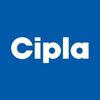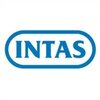
i
Dr.
Reddy's
Proud winner of ABECA 2025 - AmbitionBox Employee Choice Awards
Filter interviews by
Dr. Reddy's Senior Executive Interview Questions and Answers
Dr. Reddy's Senior Executive Interview Experiences
6 interviews found
(1 Question)
- Q1. What is alcoa stands for
- Ans.
Alcoa stands for Aluminum Company of America.
Alcoa is a leading producer of aluminum and alumina.
It was founded in 1888 as the Pittsburgh Reduction Company.
Alcoa has operations in over 10 countries worldwide.
The company changed its name to Alcoa in 1907.
Alcoa is known for its innovation in the aluminum industry.

(1 Question)
- Q1. Based on submitted resume
Interview Preparation Tips
I applied via Campus Placement and was interviewed in May 2022. There were 3 interview rounds.

(1 Question)
- Q1. Technical, Personal, Work summary, Achievements
(1 Question)
- Q1. Personal, salary, changeover reason, hike
Interview Preparation Tips
I applied via Recruitment Consulltant and was interviewed in Apr 2022. There was 1 interview round.
(1 Question)
- Q1. Process engineering related questions and documentation side question
Interview Preparation Tips
I applied via Walk-in and was interviewed in Aug 2021. There were 3 interview rounds.
Interview Questionnaire
1 Question
- Q1. Analytical method validations and development
- Ans.
Analytical method validations and development
Analytical method validation is the process of ensuring that a method is accurate, precise, and reliable.
It involves testing the method under different conditions and comparing the results to a reference standard.
Method development is the process of creating a new analytical method or improving an existing one.
It involves selecting appropriate instrumentation, optimizing par...
Interview Preparation Tips
I applied via Walk-in and was interviewed before Sep 2021. There were 2 interview rounds.

(5 Questions)
- Q1. How many parameters of HPLC Calibration ?
- Ans. 9
- Q2. What are the calibration parameters of UV Vis Spectrophometer?
- Ans. Control of wavelength, Absorption, Limit of stray light, Resolution, cell transmittance.
- Q3. What is difference between weight of two samples after ignition of ROI?
- Ans.
Weight difference of two samples after ignition of ROI
ROI stands for Residue on Ignition
The weight difference is due to the loss of volatile substances during ignition
The weight loss can be used to calculate the percentage of volatile substances in the sample
This technique is commonly used in pharmaceutical and food industries
- Q4. What is IR region range?
- Ans.
The IR region range refers to the range of wavelengths in the infrared region of the electromagnetic spectrum.
The IR region range typically spans from approximately 700 nanometers to 1 millimeter.
It is divided into three main regions: near-infrared (NIR), mid-infrared (MIR), and far-infrared (FIR).
Each region has different applications and characteristics. For example, NIR is commonly used in remote controls and optica...
- Q5. What is the UV range?
- Ans.
UV range refers to the range of ultraviolet radiation wavelengths.
UV range is typically divided into three categories: UVA (320-400 nm), UVB (280-320 nm), and UVC (100-280 nm).
UVA is responsible for skin aging and wrinkling, while UVB causes sunburn and skin cancer.
UVC is absorbed by the ozone layer and does not reach the Earth's surface.
UV radiation can also be used for disinfection and sterilization purposes.
UV range...
Interview Preparation Tips
- Instrument Calibration
- ICH
handling of Calibration of all instruments in QC.
Top trending discussions






Interview questions from similar companies

I applied via Walk-in and was interviewed in Dec 2019. There was 1 interview round.
Interview Questionnaire
1 Question
- Q1. Min basic knowledge, calculations relates to heat loads,
Interview Preparation Tips

I applied via Naukri.com and was interviewed in Jul 2019. There was 1 interview round.
Interview Questionnaire
4 Questions
- Q1. Risk management
- Q2. Trouble shooting
- Q3. Communication skills reporting higher officials
- Q4. Education
Interview Preparation Tips

Senior Executive Interview Questions & Answers
Sun Pharmaceutical Industriesposted on 15 Oct 2021
I applied via Referral and was interviewed before Oct 2020. There was 1 interview round.
Interview Questionnaire
2 Questions
- Q1. How to handle customers complaints
- Q2. Sharing response and keeping them updated
Interview Preparation Tips

I applied via Walk-in and was interviewed before Feb 2021. There were 2 interview rounds.

(1 Question)
- Q1. About HPLC and process of analysis
Interview Preparation Tips
Dr. Reddy's Interview FAQs
Tell us how to improve this page.
Dr. Reddy's Interviews By Designations
- Dr. Reddy's Team Member Interview Questions
- Dr. Reddy's Territory Manager Interview Questions
- Dr. Reddy's Medical Representative Interview Questions
- Dr. Reddy's Area Sales Manager Interview Questions
- Dr. Reddy's Analytical Scientist Interview Questions
- Dr. Reddy's Assistant Manager Interview Questions
- Dr. Reddy's Territory Business Manager Interview Questions
- Dr. Reddy's Management Trainee Interview Questions
- Show more
Interview Questions for Popular Designations
Overall Interview Experience Rating
based on 4 interview experiences
Senior Executive Interview Questions from Similar Companies
Dr. Reddy's Senior Executive Reviews and Ratings
based on 132 reviews
Rating in categories
|
Team Member
4.1k
salaries
| ₹3.4 L/yr - ₹10.6 L/yr |
|
Analytical Scientist
864
salaries
| ₹5.7 L/yr - ₹12.8 L/yr |
|
Assistant Manager
759
salaries
| ₹8.1 L/yr - ₹13.5 L/yr |
|
Team Lead
513
salaries
| ₹11.3 L/yr - ₹21 L/yr |
|
Area Sales Manager
443
salaries
| ₹6.2 L/yr - ₹12.8 L/yr |

Cipla

Lupin

Zydus Lifesciences

Sun Pharmaceutical Industries
- Home >
- Interviews >
- Dr. Reddy's Interview Questions












